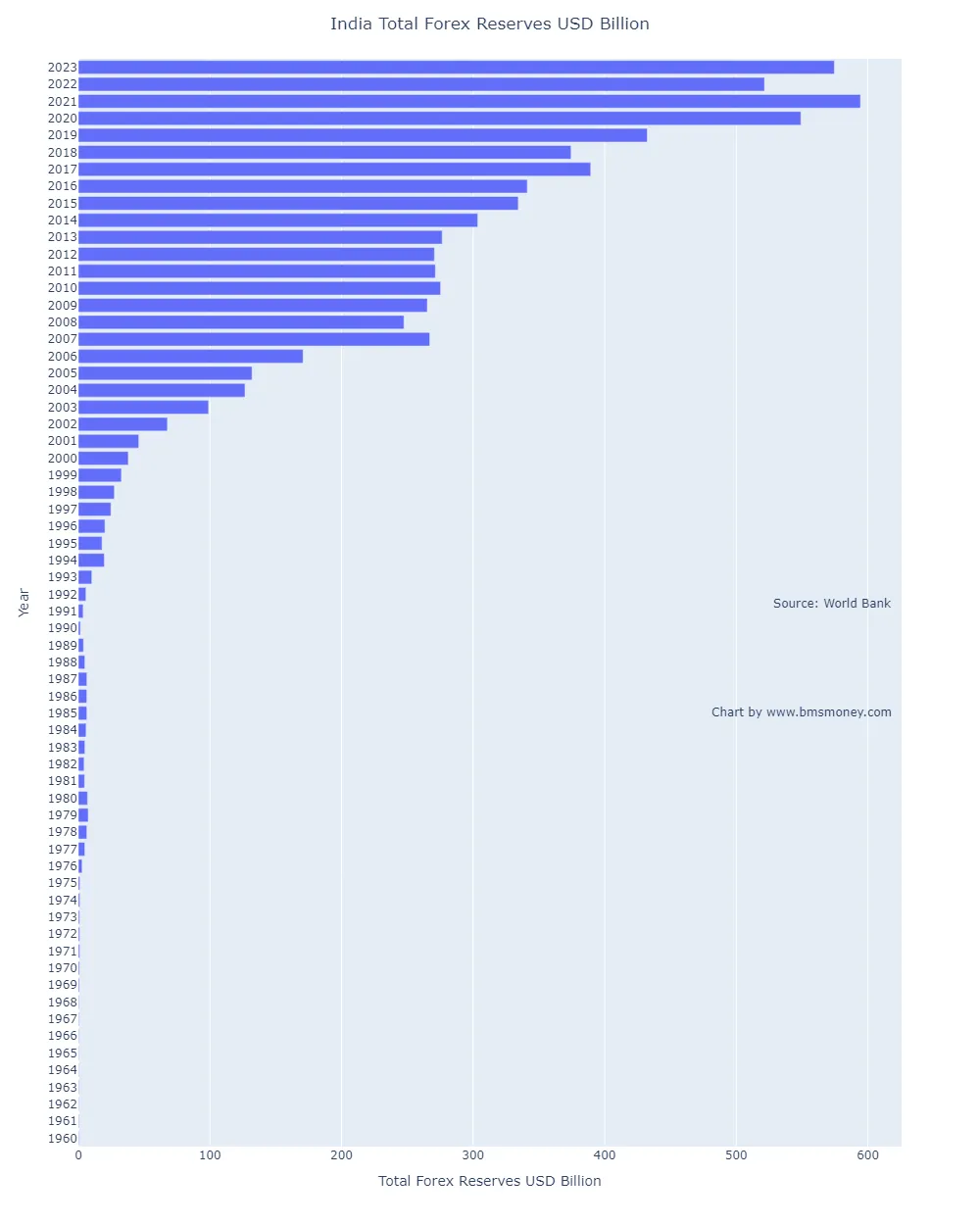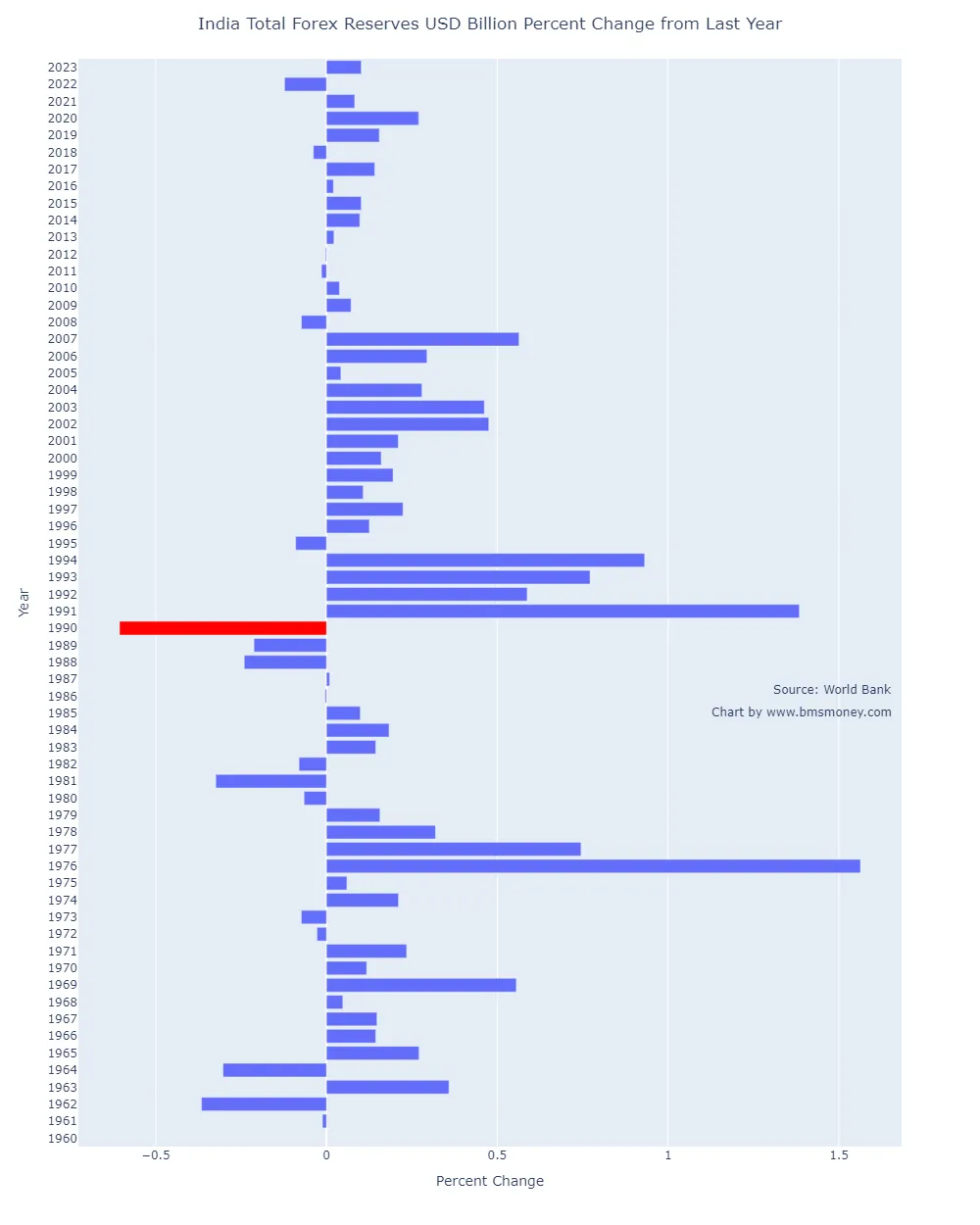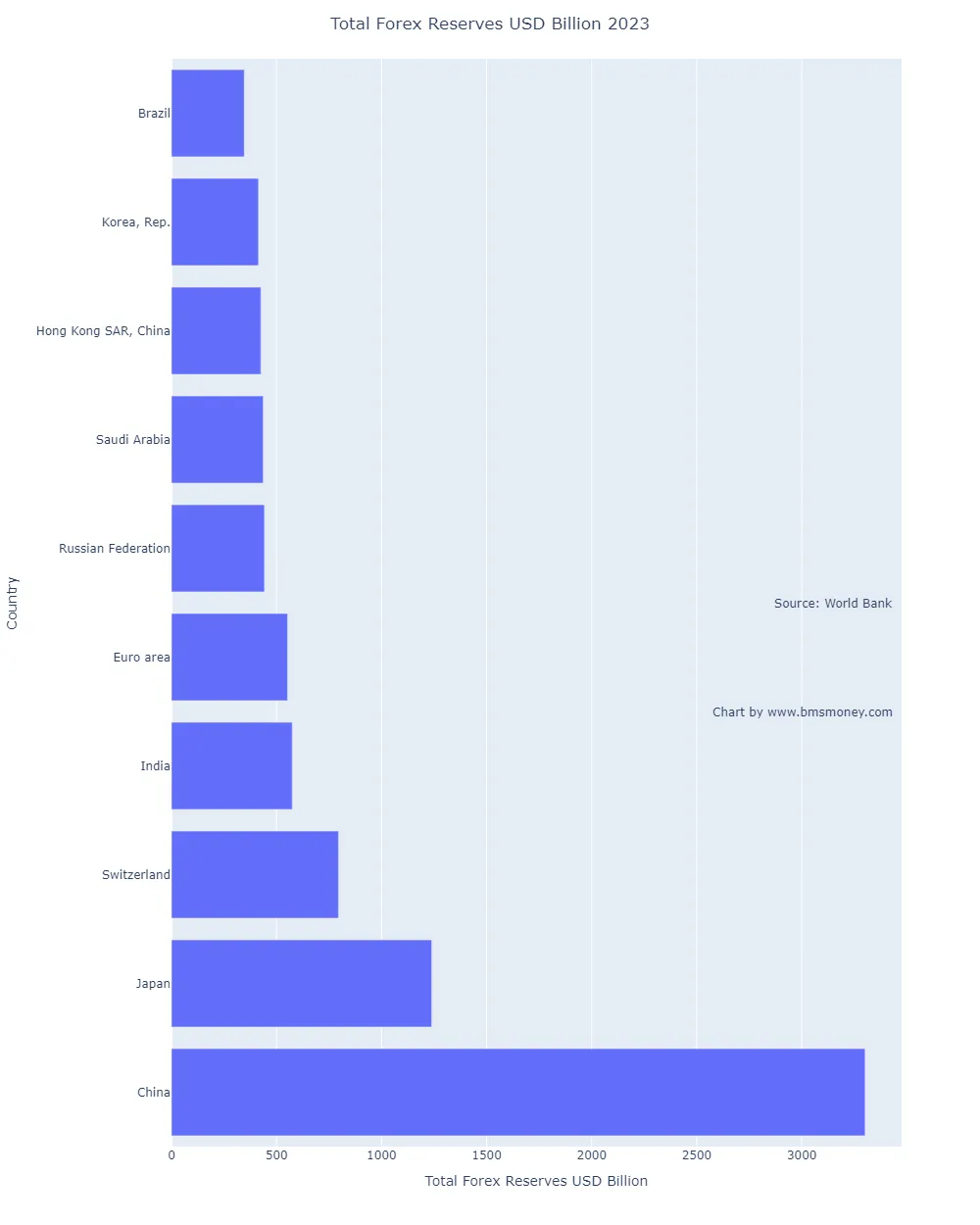- Economic Recovery: India’s forex reserves have grown from less than $2 billion during the 1991 crisis to over $600 billion in 2023, showcasing a remarkable transformation.
- Import Coverage: Reserves now comfortably cover 6–7 months of imports, reflecting India’s ability to manage trade dependencies despite rising import bills.
- Global Standing: India ranks among the top nations in forex reserves, trailing major economies like China and Japan, but surpassing several developed economies.
- Resilience Amid Crises: The reserves have provided a buffer during global events like the 2008 financial crisis and the COVID-19 pandemic.
- Policy Focus: Continued diversification of reserves and reduced import dependency remain critical for sustaining stability and economic growth.
Introduction
As one of the fastest-growing major economies, India holds a pivotal position in the global economic landscape. The country’s robust foreign exchange (forex) reserves are a critical factor underpinning this growth, which serves as a financial buffer against economic shocks and external vulnerabilities. These reserves, comprising foreign currencies, gold, and other assets, not only safeguard against balance-of-payments crises but also bolster investor confidence in the Indian economy.
To evaluate the health of a nation’s forex reserves, several indicators provide valuable insights. Key metrics such as Total Reserves Minus Gold, Reserves in Months of Imports, Reserves as a Percentage of External Debt, and Short-Term Debt as a Percentage of Reserves offer a comprehensive understanding of a country’s financial stability and resilience.
This article delves into India’s forex reserve metrics, analyzing their trends, implications, and the country’s performance in the global context. Through these indicators, we aim to assess India’s economic resilience and highlight areas of strength and potential risk, laying the foundation for policy recommendations to ensure sustainable growth.
Foreign Exchange Reserve of India
India’s forex reserves reflect its immediately accessible liquid assets, which are critical for managing short-term liabilities, supporting the rupee, and ensuring smooth import payments. Unlike gold, liquid reserves can be deployed swiftly to address currency volatility or sudden capital outflows, strengthening economic stability. Recent data show India’s non-gold reserves remain robust, aiding in current account deficit management and boosting investor confidence. These reserves are vital during global shocks, such as the pandemic or geopolitical tensions. By prioritizing liquid reserves, India demonstrates a strategic approach to reserve management, ensuring flexibility and resilience in an uncertain global financial environment.

From Instability to Stability
 India’s journey from instability to stability in managing foreign exchange reserves is vividly illustrated in the charts. Over the decades, India has transitioned from a period of vulnerability, marked by economic challenges and limited reserves, to becoming a nation with robust financial buffers. The first chart, showcasing the total reserves of USD billion from 1960 to 2023, highlights the dramatic transformation. In the early decades, reserves were modest, with notable fluctuations. The 1991 balance-of-payments crisis was a defining moment, exposing the fragility of India’s reserves, which were then insufficient to cover even a few weeks of imports.
India’s journey from instability to stability in managing foreign exchange reserves is vividly illustrated in the charts. Over the decades, India has transitioned from a period of vulnerability, marked by economic challenges and limited reserves, to becoming a nation with robust financial buffers. The first chart, showcasing the total reserves of USD billion from 1960 to 2023, highlights the dramatic transformation. In the early decades, reserves were modest, with notable fluctuations. The 1991 balance-of-payments crisis was a defining moment, exposing the fragility of India’s reserves, which were then insufficient to cover even a few weeks of imports.
Following the crisis, economic reforms ushered in a new era of stability. The liberalization policies of the 1990s, coupled with globalization, growing exports, and a booming IT sector, catalyzed a significant accumulation of reserves. By 2023, India’s forex reserves surpassed $600 billion, reflecting a consistent effort by the Reserve Bank of India (RBI) to insulate the economy from external shocks. The consistent reserve growth during periods of global challenges, such as the COVID-19 pandemic, further underscores India’s progress toward financial resilience.
The second chart, tracking year-on-year percentage changes, provides a deeper perspective on this transition. In the early years, reserves were characterized by high volatility, driven by limited trade exposure and external shocks. The sharp dip in 1990 symbolizes the instability of that period, but the rapid recovery post-1991 highlights the effectiveness of policy interventions. Over time, year-on-year changes stabilized, with only minor disruptions during global events like the 2008 financial crisis and the pandemic.
Together, the charts illustrate India’s evolution from financial uncertainty to a position of stability and strength. This transformation has been fueled by strategic reserve management, forward-looking policies, and resilience to external pressures. Today, India’s reserves not only safeguard the economy against global shocks but also reinforce its position as a stable and reliable player in the global financial system.
Top Performing Funds for You
Top Performing Equity Funds Top Performing Debt Funds Top Performing Hybrid FundsGlobal Standing in Reserves as of 2023
 India ranks as one of the leading nations in terms of foreign exchange reserves globally, with over $600 billion in reserves as of 2023. While it trails behind countries like China, Japan, and Switzerland, India stands ahead of economies such as Brazil, South Korea, and Saudi Arabia. China dominates the global ranking with over $3 trillion in reserves, reflecting its trade surplus and export-driven economy. India’s position underscores its robust reserve management and growing economic resilience, ensuring it remains well-prepared to handle external shocks and trade imbalances, cementing its role as a key player in the global financial system.
India ranks as one of the leading nations in terms of foreign exchange reserves globally, with over $600 billion in reserves as of 2023. While it trails behind countries like China, Japan, and Switzerland, India stands ahead of economies such as Brazil, South Korea, and Saudi Arabia. China dominates the global ranking with over $3 trillion in reserves, reflecting its trade surplus and export-driven economy. India’s position underscores its robust reserve management and growing economic resilience, ensuring it remains well-prepared to handle external shocks and trade imbalances, cementing its role as a key player in the global financial system.
Top Performing Equity Fund Categories for You
Top Performing Large Cap Funds Top Performing Mid Cap Funds Top Performing Small Cap FundsTotal Reserves in Number of Months of Imports

The "Total Reserves in Months of Imports" is a key indicator of a country's economic stability and its ability to withstand external shocks. It measures how many months of essential imports can be funded using existing foreign exchange reserves. For India, this metric is particularly crucial as the country heavily relies on imports for energy, technology, and key raw materials. A higher value provides a cushion against trade imbalances, currency volatility, and global financial uncertainties. The chart on India's reserves in months of imports highlights significant trends over the years, reflecting the nation's evolving economic resilience.
In the 1970s and 1980s, India maintained higher import coverage, reaching levels above 10 months during certain years. However, the 1991 balance-of-payments crisis marked a dramatic decline, with reserves falling to less than two months of import coverage. This critical period underscored the importance of maintaining adequate reserves, prompting significant economic reforms. Post-1991, India's reserves steadily grew, resulting in improved import coverage. By the early 2000s, the figure stabilized around 8 to 10 months, reflecting robust reserve management.
Recent data shows a decline in the months of import coverage to around 6–7 months, despite absolute reserves being at record highs. This is due to rising import bills, particularly for energy, and increased global trade activity. While still at a comfortable level, these figures emphasize the need for strategic policies to balance reserve growth with import dependency. Sustaining a healthy months-of-imports ratio is essential to safeguard India's economy from external vulnerabilities and ensure long-term stability.
Top Performing Debt Fund Categories for You
Top Performing Liquid Funds Top Performing Ultra Short Duration Funds Top Performing Corporate Bond FundsConclusion
India’s journey from economic vulnerability to resilience is vividly captured through its forex reserve metrics. The steady growth in total reserves, rising to over $600 billion in 2023, reflects prudent policies and robust reserve management. The "Total Reserves in Months of Imports" underscores India's capacity to weather trade disruptions, though recent declines highlight rising import bills. Global comparisons show India as a leading economy, though behind giants like China and Japan. Despite challenges, India’s strong reserve position provides a buffer against external shocks. Strategic diversification of reserves and reduced import dependence will ensure sustained stability and global economic prominence.